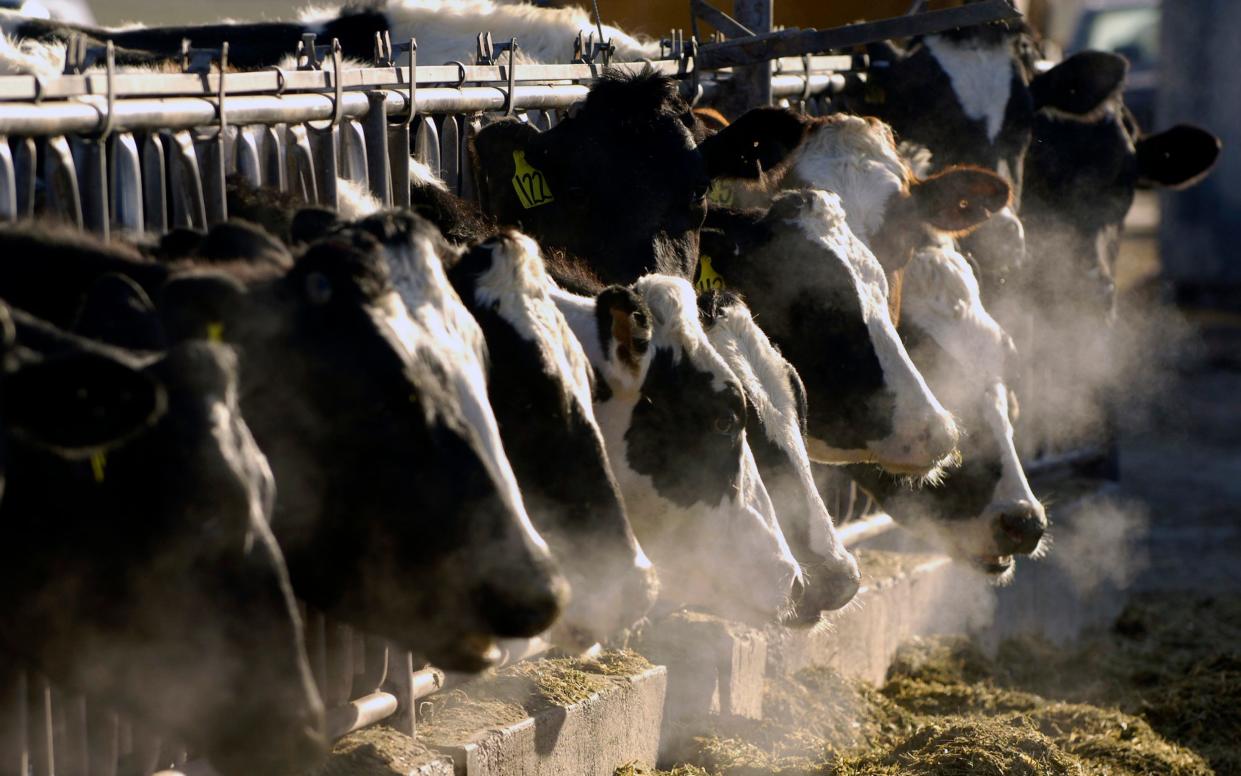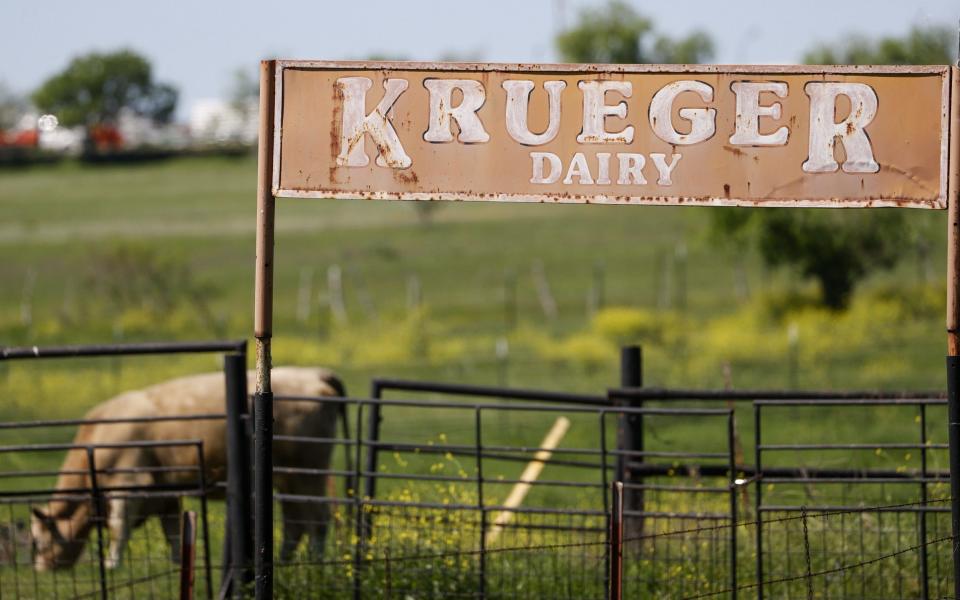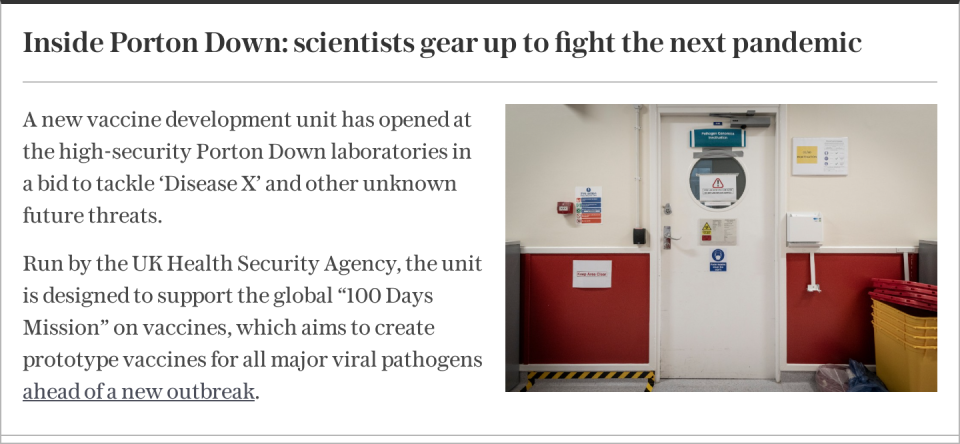US cow-derived H5N1 virus flown to Porton Down under strict security for UK testing

A new unit set up to tackle H5N1 is testing imported samples of the virus at the high-security laboratories at Porton Down, in a race to understand if it poses a substantial risk to British livestock.
Virus extracted from sick cattle in the US has been shipped to three secure UK laboratories in Porton Down, London and Weybridge, Prof Ashley Banyard of the Animal Plant and Health Agency (APHA) told The Telegraph.
The task force is trying to determine whether the outbreak of H5N1 in America, which has so far been linked to outbreaks in 49 dairy herds across nine states, is a one-off spillover event, or if the virus has adapted to replicate in cattle – which means it could impact UK livestock.
An outbreak in the UK could have a significant impact on the dairy industry as it already has in the US. It would also increase the risk of the virus ‘ jumping’ to humans, either through contact with agricultural workers or via food products like meat and dairy. In the US at least one farm worker has been infected and several species of mammals including farm cats, wild possums and foxes.
“The occurrence of events in America has led to us taking preparatory measures and a more watchful eye,” said Prof Banyard.
“Samples have been shared with our very high containment secure labs, and we’re having a look to understand if there is genuinely something different about this clade of virus.”

APHA is also working to develop new diagnostic tests that can detect H5N1 in milk, which is where the highest viral load has been found in sick US cows. Existing tests in the UK are designed to identify the virus in respiratory samples like nasal and throat swabs.
“We’re doing this so that if something did happen – and I don’t think it will – then we could diagnose [H5N1] quickly,” said Prof Banyard.
Despite these measures, the government is still not testing British cattle for the highly pathogenic avian flu, which has killed millions of birds and animals since it started circulating in 2020, a decision which has been criticised by scientists as “short-sighted”.
The Department for Food, Environment, and Rural Affairs (DEFRA) has insisted that there is “no reason to suspect the virus is circulating in British cattle,” yet scientists say that they are unlikely to find something they are not testing for.
Prof Banyard admitted much of the work undertaken by the government unit is “reactive”.
“This reminds me a lot of how we handled Covid-19 from the beginning,” said Dr Krutika Kuppalli, a spokesperson for the Infectious Disease Society of America and former WHO medical officer.
“When Covid was in China, it was hard for other governments to fathom it could reach their countries – but it did.
“If you wait until reports of sick cows you are going to be behind the ball,” stressed Dr Kuppalli.

DEFRA’s involvement in particular has raised concerns among some experts because its principal role is to promote British farm produce.
The agency lobbied to stop the press calling the 2008 H1N1 pandemic Swine Flu because “pigs are not to blame” and it presided over the salmonella and BSE scandals of the 1990s, the latter of which killed 176 people.
“The financial implications for the agriculture industry are important and should be taken into account, but surveillance and early detection not only help to contain an outbreak but prevent less economic peril in the long-term,” said Dr Kuppalli.
Prof Banyard said part of the reason the UK isn’t yet testing for H5N1 in cows is that there have been no clinical signs of illness in the animals reported to authorities.
Cows who have become sick with H5N1 in the US have been found to produce around 10-20 per cent less milk than normal, which would be an indication that they have the virus.
Since there has been “no mysterious milk loss” reported to DEFRA or APHA, the agencies don’t deem it necessary to start testing, and as such they are “pretty confident we don’t have the virus in [UK] cattle,” said Prof Banyard.
Scientists have pointed out that this argument is not foolproof, however.
“This virus has continued to surprise us – we are still learning and don’t know if it’s spreading in asymptomatic cows, thus the prudent approach would be to be proactive and test to confirm there are no cases,” said Dr Kuppalli.
“We know the virus can spread from infected birds to cattle – it’s a question of when not if and they should be testing cattle,” added Prof Devi Sridhar, a global public health expert at the University of Edinburgh and former scientific adviser to the Scottish government on Covid-19.

Although it is still unclear how the virus first jumped to cattle, US health authorities think the most likely route of infection is via H5N1-positive wild birds – thousands of which have been detected in the UK over the last three years.
Prof Banyard conceded that it was “possible” that infected birds could act as a route of transmission to cows in Britain.
“If you had a dead duck in a water trough that then leached virus, and cows drank it directly, then yes it’s possible – but we’ve got no evidence of any cattle showing clinical signs of disease,” he said.
“How can they be sure? The UK government can’t say for certain that the cows don’t have H5N1, because they could be asymptomatic,” stressed Dr Kuppalli.
So far this year, there have been two confirmed cases of H5N1 in humans.
In Vietnam, a man died in March after direct contact with an infected bird, whilst in Texas a farm worker caught the virus from sick cattle – although his symptoms were mild.
The US Centre for Disease Control is monitoring a further 300 people who have been exposed to the virus via cattle for signs of infection.
The WHO considers the risk to humans low but urged countries to rapidly share information to enable real-time monitoring of the situation to ensure preparedness as the virus continues to spread.
Protect yourself and your family by learning more about Global Health Security

